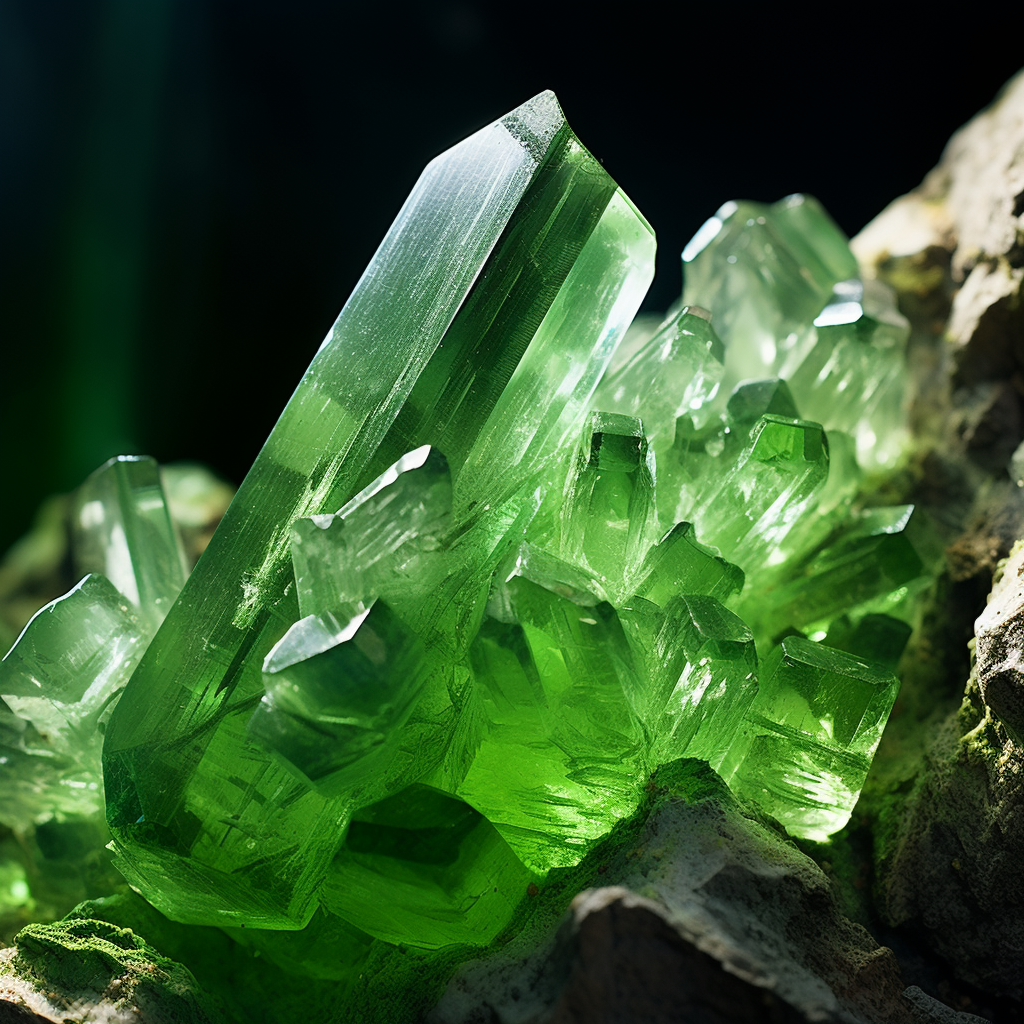How to determine the quality and authenticity of green crystal?
Methods for determining the quality and authenticity of green crystal:
Observe the appearance
- Color: The color of natural green crystal is usually pale green, the color is naturally soft, unevenly distributed, and there may be different shades of color difference. Artificial green crystals, or dyed crystals, tend to be too bright and uniform in color, making them look unnatural.
- Transparency: High-quality natural green crystal has high transparency, but there are usually some fine impurities, ice cracks or cotton wool-like substances inside, and when you look at the light, you can see faint uniform fine horizontal stripes or catkins. Artificial crystals, on the other hand, are relatively pure, with fewer internal blemishes, and are extremely transparent, even close to the transparency of glass.
- Luster: Natural green crystal has an oily luster on the surface, which looks crystal moist, giving people a soft and bright feeling. The luster of artificial crystals is more stiff, usually showing a vitreous luster, lacking the warm texture of natural crystals18.

Check for inclusions
- Natural Inclusions: Natural green crystal will contain some gas-liquid inclusions, symbiotic minerals, ice cracks, strata fissures and other imperfections during the formation process, and these characteristics can be seen when viewed with a 20x jewelry magnifying glass. For example, the inside of the Green Ghost Crystal will have natural anomalies formed by minerals such as green volcanic marl, such as clouds, aquatic plants, whirlpools, and even pyramids.
- Artificial Inclusions: Inclusions in artificial crystals are often intentionally added or formed during the manufacturing process and are distinctly different from natural inclusions. For example, some synthetic crystals often have triangular long tubular pores, the section is triangular, and there are uneven green or fiery red powders distributed along the wall, and the middle is often empty, and the end of the long tube has a tendency to become sharper.
Test the physical properties
- Hardness: Green crystal has a hardness of 7 on the Mohs scale and can be used to perform friction tests with less hard objects such as glass. If the green crystal can leave scratches on the surface of the glass, but there are no scratches on its own, it means that it is a real green crystal; Conversely, if the green crystal is scratched by the glass, it may be a man-made counterfeit.
- Density: True green crystal has a density of around 2.65g/cm³, while most false green crystals have a lower density, usually 2.4-2.5g/cm³. The density of green crystal can be measured using a professional density testing instrument, such as a specific gravity balance, to determine its authenticity.
- Birefringence: Put the crystal on a hair strand, and the human eye can see through the crystal that the hair is a double shadow, which is a natural crystal, because natural crystal has birefringence characteristics, while artificial crystal generally has no birefringence phenomenon.
Other methods of identification
- Temperature: Even on dog days in the hot summer, there will be a cold and cool sensation when licking the surface of natural green crystal with your tongue; Fake crystals, on the other hand, have no sense of coolness.
- Price: Natural green crystal is relatively rare and relatively expensive. If you encounter a green crystal that is too low in price, you need to be cautious about buying it, it is likely to be a fake or a poor quality artificial crystal.
- Professional identification: If you still have doubts about the authenticity and quality of green crystal, you can seek professional jewelry appraisers or authoritative jewelry appraisal institutions for identification, who will use more professional instruments and methods, such as polarizers, thermal conductivity meters, etc., to accurately judge the authenticity and quality of green crystal


Leave a Reply
Want to join the discussion?Feel free to contribute!